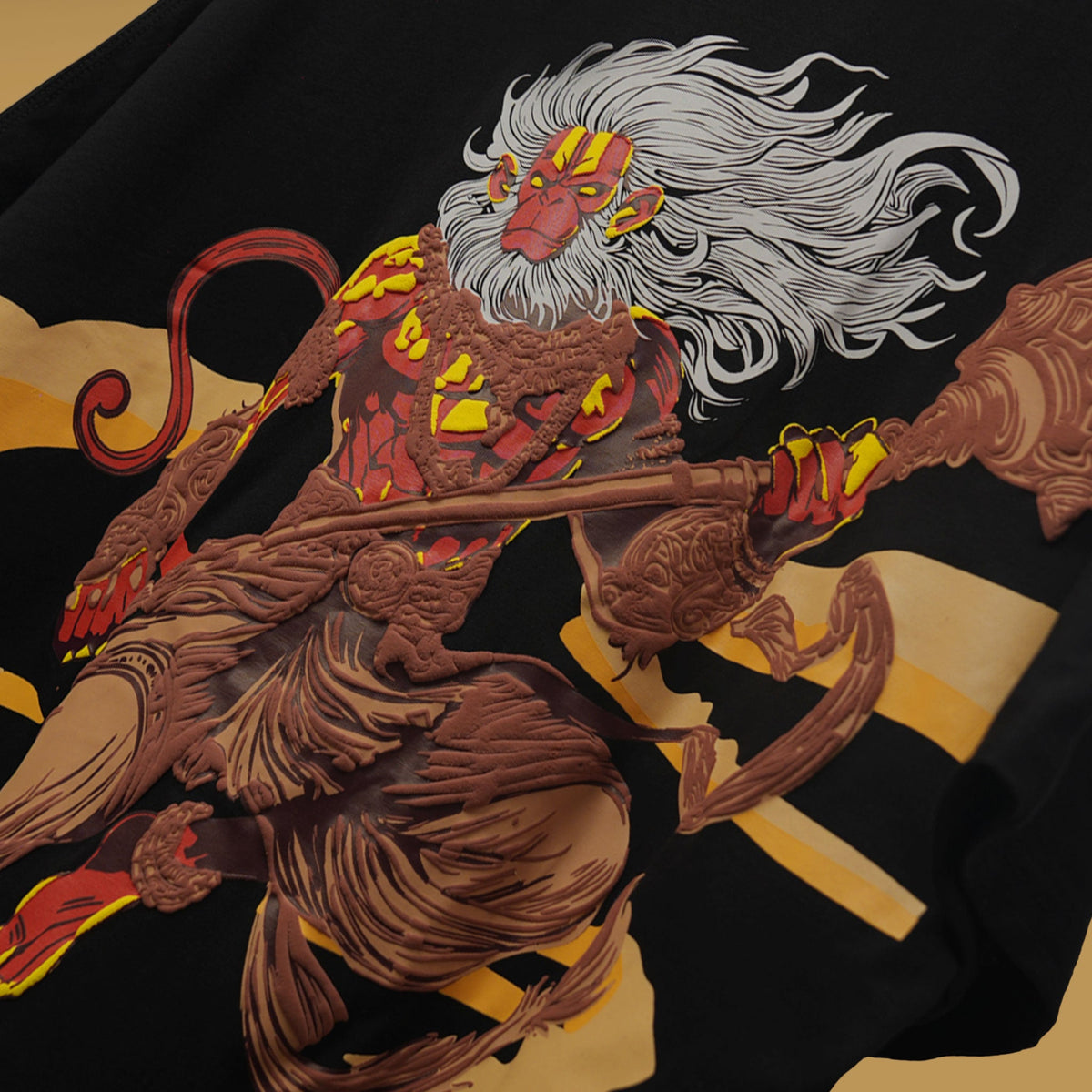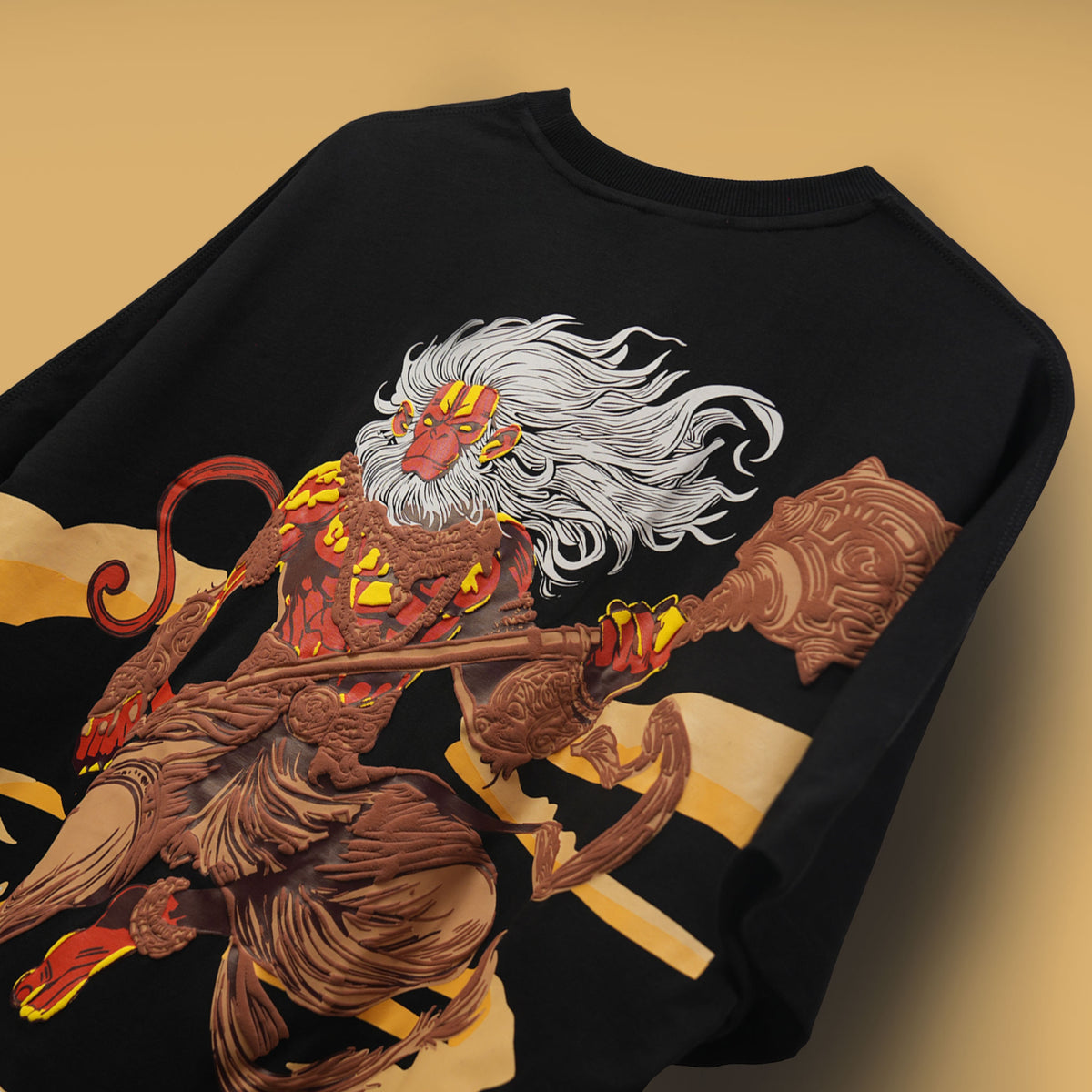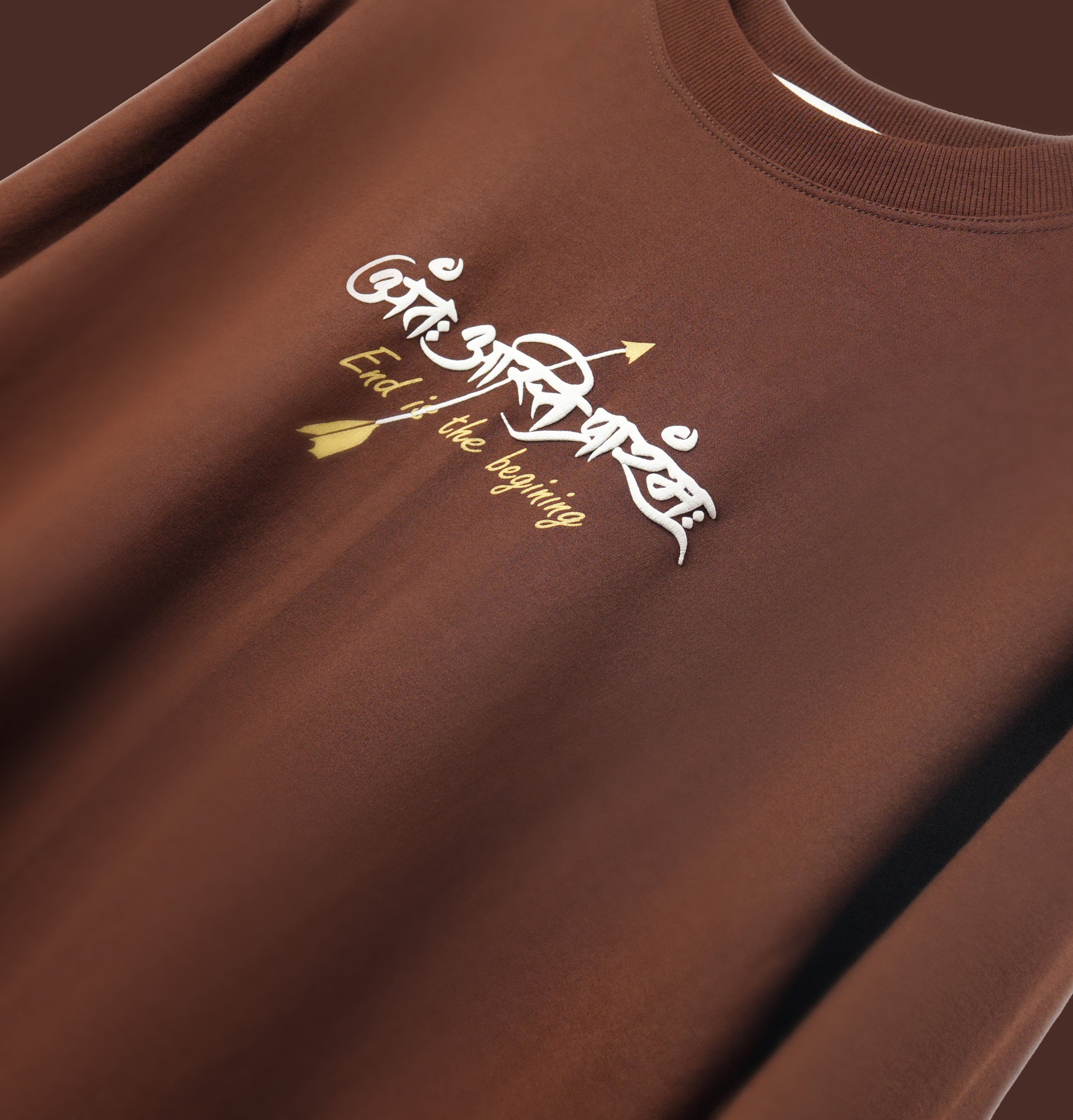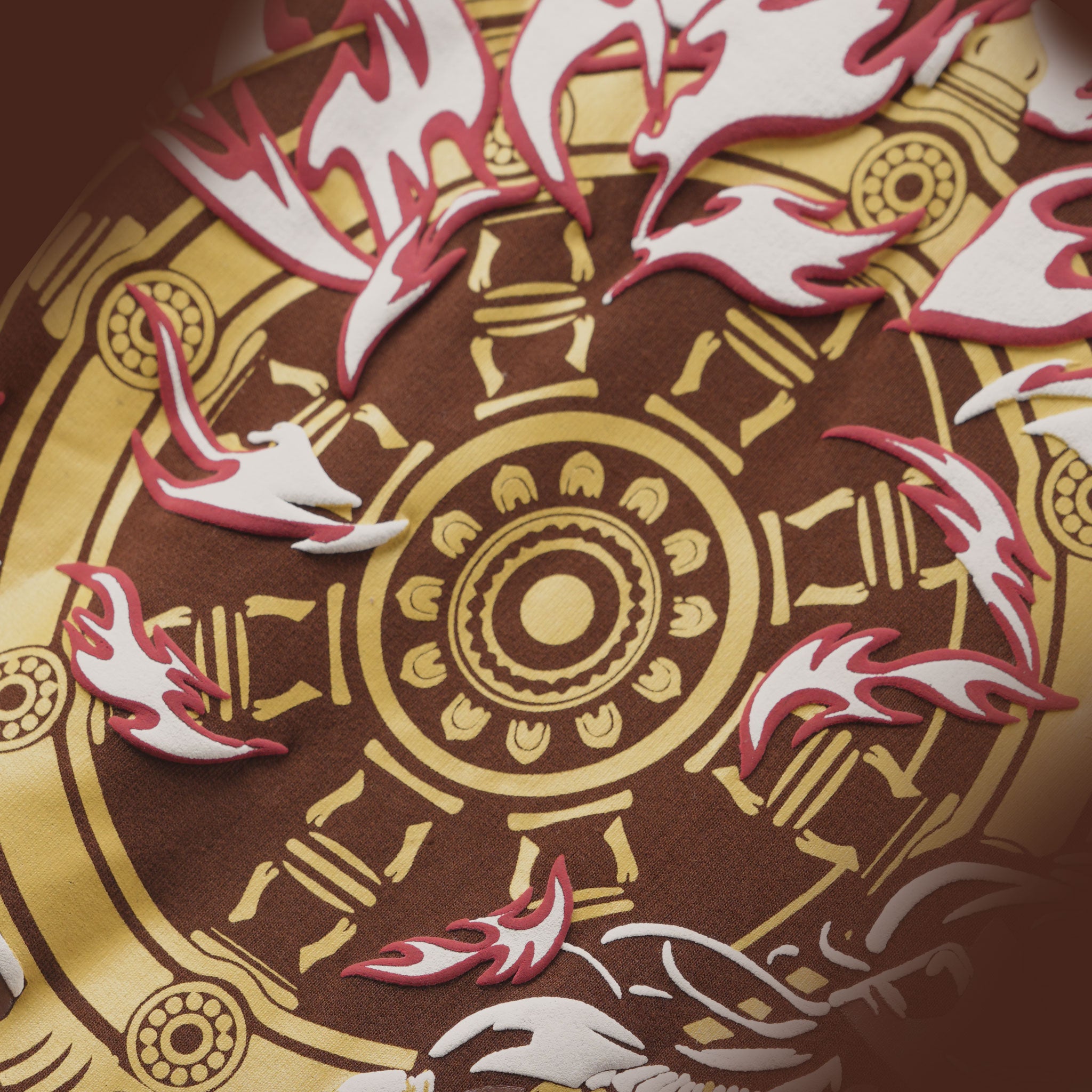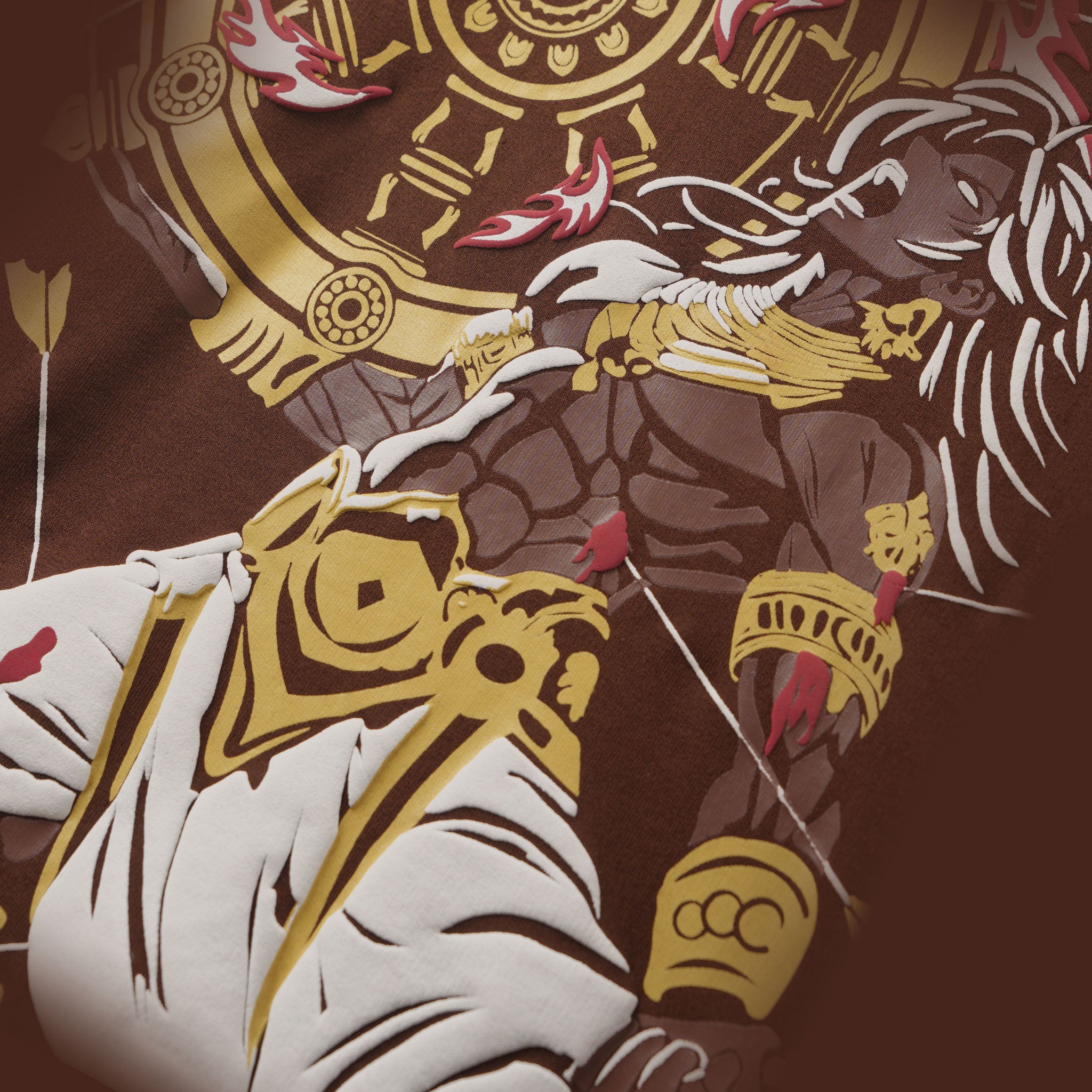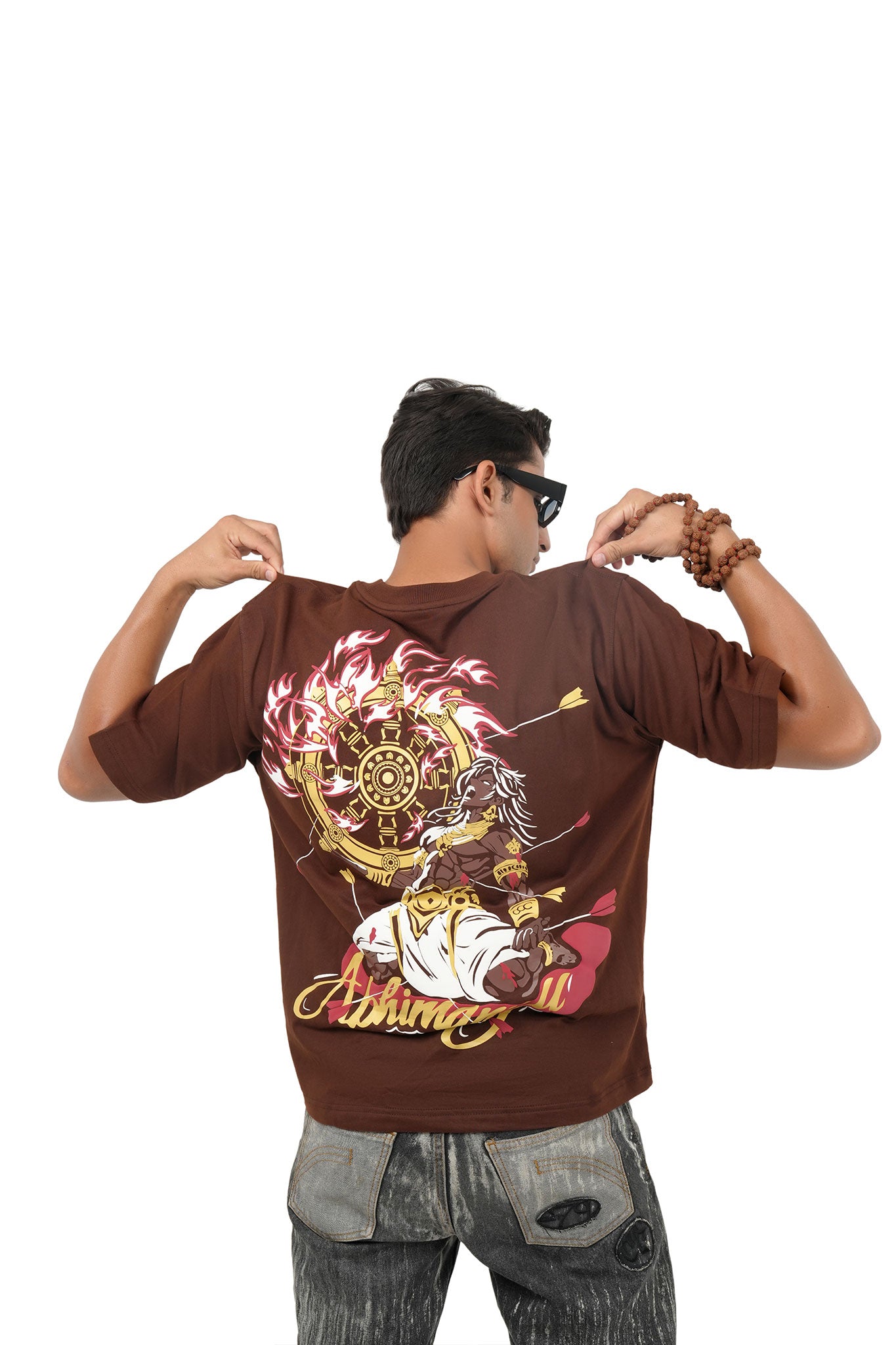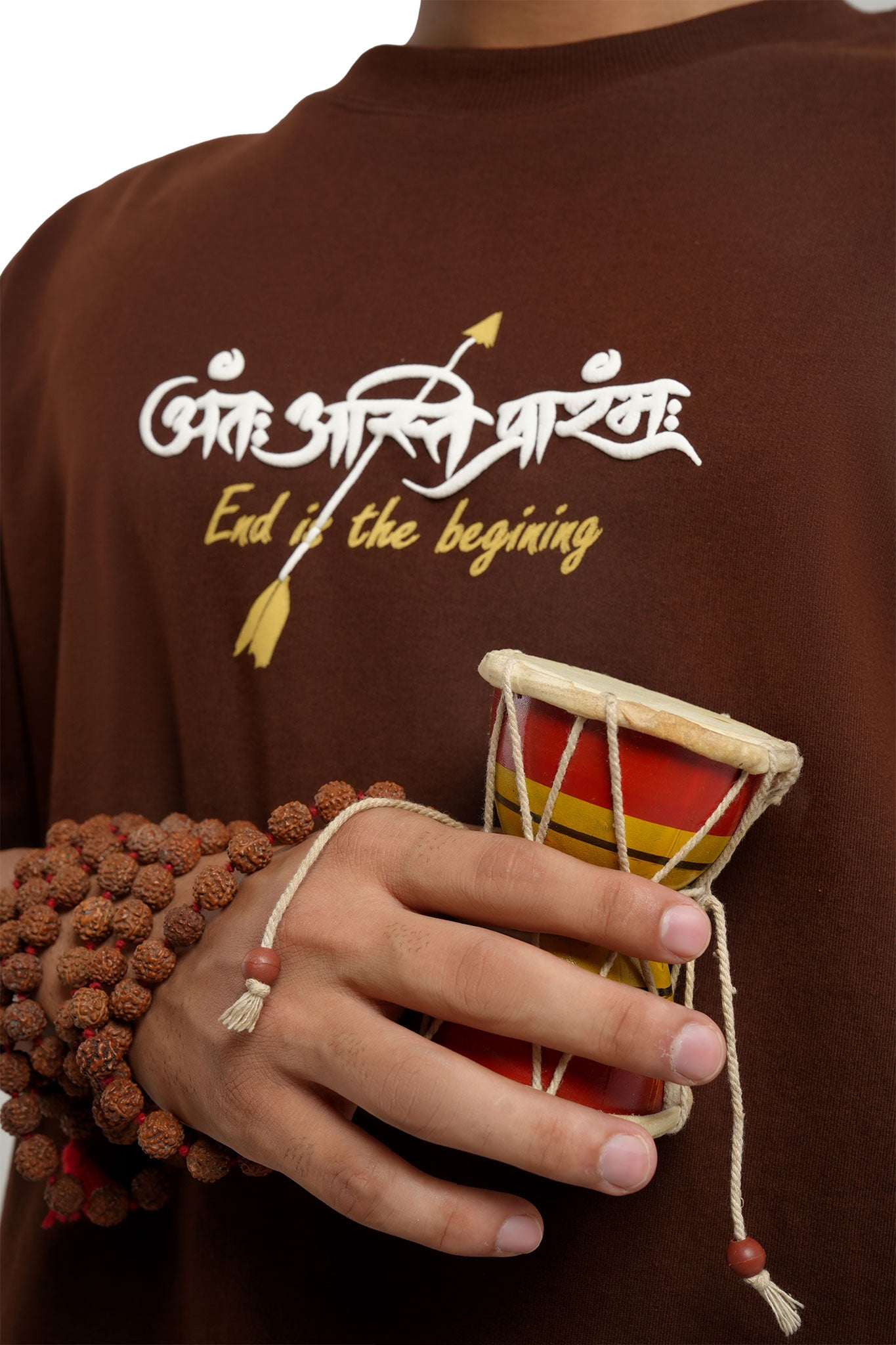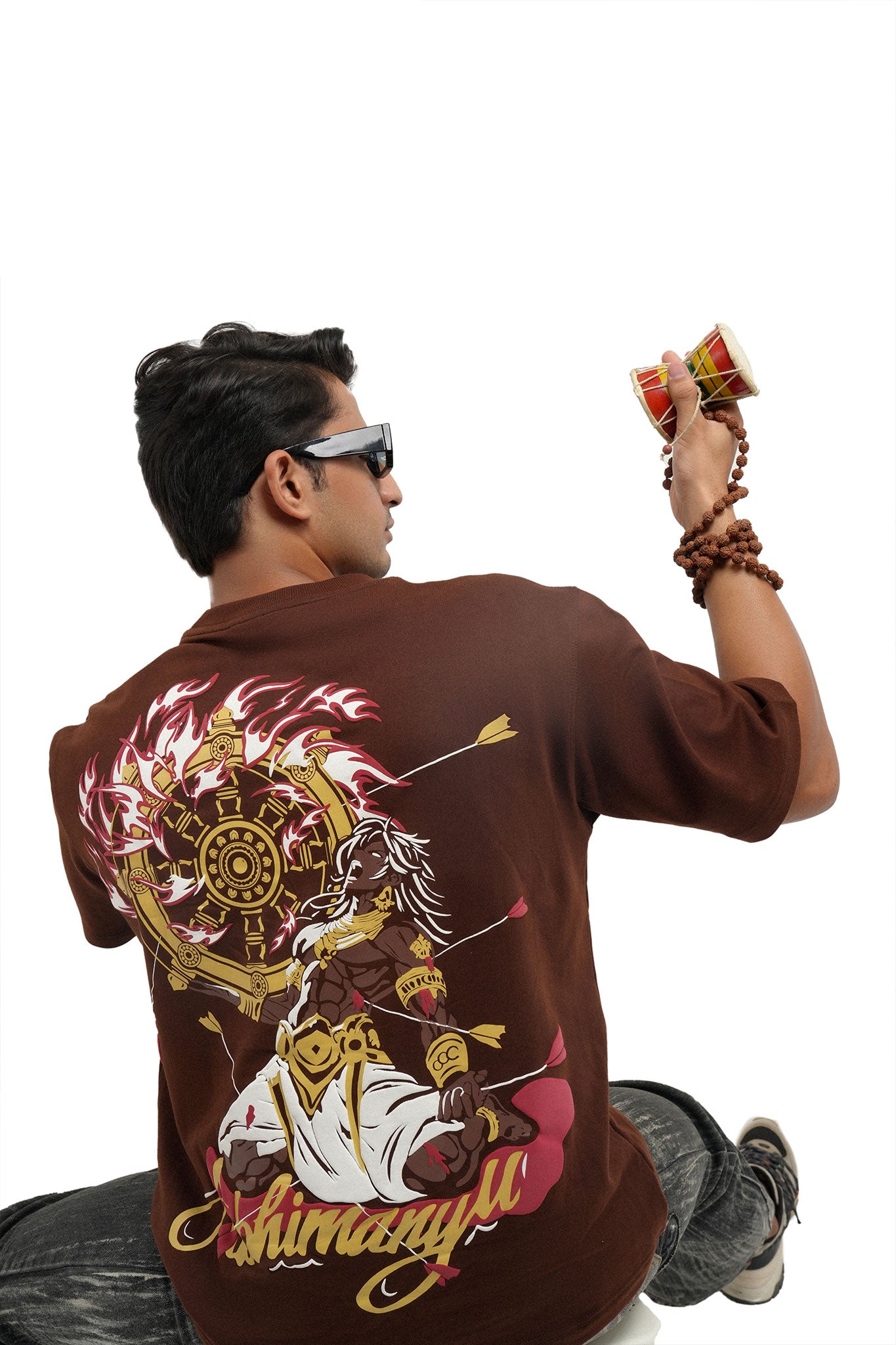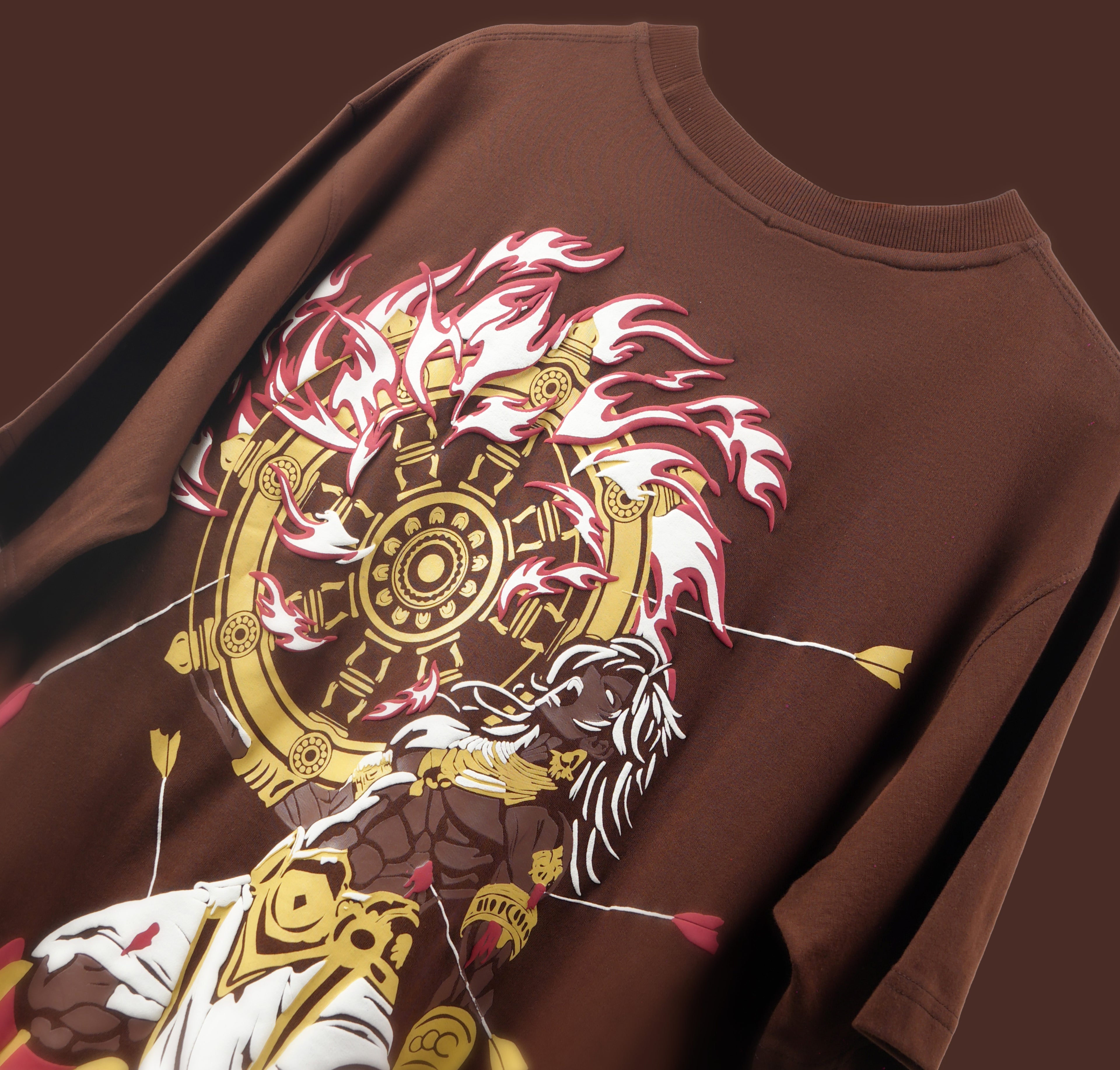
Veer Abhimanyu: The Legacy of Valor
As we can all feel, the power in the title signifies that the end is the beginning of something new—here, it refers to the end of the Mahabharata and the beginning of Kalyuga.
The artform presents the bravery and courage of the great warrior Abhimanyu (son of Arjuna), who was tricked to death at the age of 16 on the battlefield of the Mahabharata. He is depicted wearing golden ornaments and a white dhoti in the war scene. Abhimanyu was one of the few warriors capable of entering the Chakravyuha. On Yudhishthira's command, he cut through the Kauravas' formidable defense and tore it apart. In separate battles, Abhimanyu defeated Duryodhana, Dushasana, Drona, Ashwatthama, Karna, and Shakuni. In response, they devised a strategy to attack him simultaneously, violating the rules of war. They demolished his chariot, killed his horses, broke his weapons, and shot him with numerous arrows, which can be seen in the artform as having wounded many parts of his body, leaving him ensanguinated.
Though Abhimanyu's knees touch the ground, his head remains high with undying courage as he continues to fight, wielding a chariot wheel. The wheel is shown ablaze in red and golden hues, symbolizing his rage and bloodthirsty anger. The red pool of blood beneath his knees inundates the thirsty earth, mixed with his enemies' blood, until his last breath. Ultimately, he is shot in the head by Dushasana's son, causing him to succumb to his wounds and die a hero.
Abhimanyu's name is embedded in history in golden letters among the greatest of warriors. His body perished with the end of the Mahabharata, but his story lives on, even in Kalyuga, never to be forgotten.
